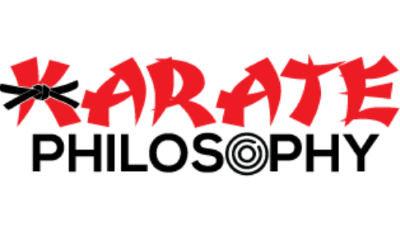“The Mind Must Be Set Free” (一、心は放たん事を要す Hitotsu, kokoro wa hanatan koto o yōsu) is the sixth of the twenty precepts that Gichin Funakoshi wrote to guide his students in their martial arts and character development.
As mentioned in discussions of precepts 1 to 5, Funakoshi did not leave behind any writing that explores those precepts but Genwa Nakasone (a teacher, politician, and also editor and publisher of martial art books) wrote commentaries on these precepts which were read and approved by Funakoshi.
With regard to the sixth precept “The Mind Must be Set Free”, Genwa Nakasone quoted both the Chinese Confucian philosopher Meng Tzi (372–289 BC) and the Chinese cosmologist and philosopher Shao Yong (1011–1077) and concluded that at the initial stages, one should reign in the mind but, later on, one should set the mind free.
So, what does this mean?
My interpretation of this is that, at the beginning of your martial art journey, you know nothing about karate, self-defense, or fighting. Therefore, you need self-discipline and you need to put in the conscious effort and the time to build up a good foundation of your martial art knowledge.
This means turning up on the dojo floor to train regularly as well as setting out the time to practice by yourself at home.
It also means listening and following your instructor’s guidance, thinking about your strengths and weaknesses, trying out techniques and sparring strategies that suit your physique, and forging and bringing out the martial artist within yourself.
All of these require conscious effort, memorizing, thinking, analyzing, connecting the dots, and a lot of practice.
For example, if you have no previous martial art experience, learning a single age uke block can take a lot of time just to get the motion right. But with thousands of hours of practice, testing and listing to your body, you will eventually get the hang of it and be able to effectively block a jodan level attack with it.
A simple oi tsuki punch can also take years to master. In the beginning, you need to think about the motion of your hands, your shoulders, and your hips. But over time, punching will become natural and you will one day be able to inflict a lot of damage with just a single punch.
After years and years of hard work, diligent practice, blood, sweat, and tear, hopefully, you will eventually get to a stage where martial art is you and you are the martial artist and the mind can finally be set free.
You will have reached the final stage of learning called “unconscious competence“.
Martial art techniques and martial mindset, at this stage, will have become a part of your bodyness and mentality.
For example, when you see a jodan attack coming, you may unconsciously evade and block the attack at the same time and follow up with a counter-attack.
When you see a mawashi kick coming, you swiftly move in for a throw.
This is because all these martial art techniques have become second nature to you.
When you fight, it is your body that does the fighting unconsciously, not your mind.
There is no contemplating, thinking, or planning.
Your mind is in the here and now, being alert and aware of what is happening but it doesn’t engage in planning, strategizing, or second-guessing what the opponent may do.
Your mind is free and you are ready to deal with whatever the opponent throws at you.
‘You learn forms and structures to be free from them later on.’ I don’t remember who said that but it seems apt to our present discussion.
I think the same thing happens with artists or athletes in other fields, from composing music and painting to playing tennis, football, and basketball. They all require years and years of practice before everything looks just natural and effortless to the untrained eyes.
Hence “the mind must be set free” but only when the body and the mind are both ready for it.
All Posts in the Series:
Precept 1: Do Not Forget that Karate-do Begins and Ends with Rei
Precept 2: There Is No First Strike in Karate
Precept 3: Karate Stands on the Side of Justice
Precept 4: First Know Yourself Then Know Others
Precept 5: Mentality Over Technique
Precept 6: The Mind Must Be Set Free
Precept 7: Calamity Springs from Carelessness
Precept 8: Karate Goes Beyond the Dojo
Precept 9: Karate Is a Lifelong Pursuit
Precept 10: Apply the Way of Karate to All Things, Therein Lies Its Beauty
Precept 11: Karate Is Like Boiling Water: Without Heat, It Returns to Its Tepid State
Precept 12: Do Not Think of Winning, Think, Rather, of Not Losing
Precept 13: Make Adjustments According to Your Opponent
Precept 14: The Outcome of a Battle Depends on How One Controls Truth and Fiction
Precept 15: Think of the Opponent’s Hands and Feet as Swords
Precept 16: When You Step Beyond Your Own Gate, You Face a Million Enemies
Precept 17: Kamae Is For Beginners; Later, One Stands In Shizentai
Precept 18 – Perform Kata Exactly; Actual Combat Is Another Matter
Precept 20: Be Constantly Mindful, Diligent, and Resourceful in Your Pursuit of the Way
References:
Gichin Funakoshi (1938). The Twenty Guiding Principles of Karate
Karate-Do Kyohan: The Master Text

